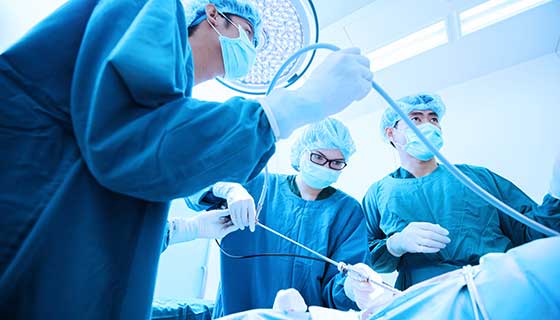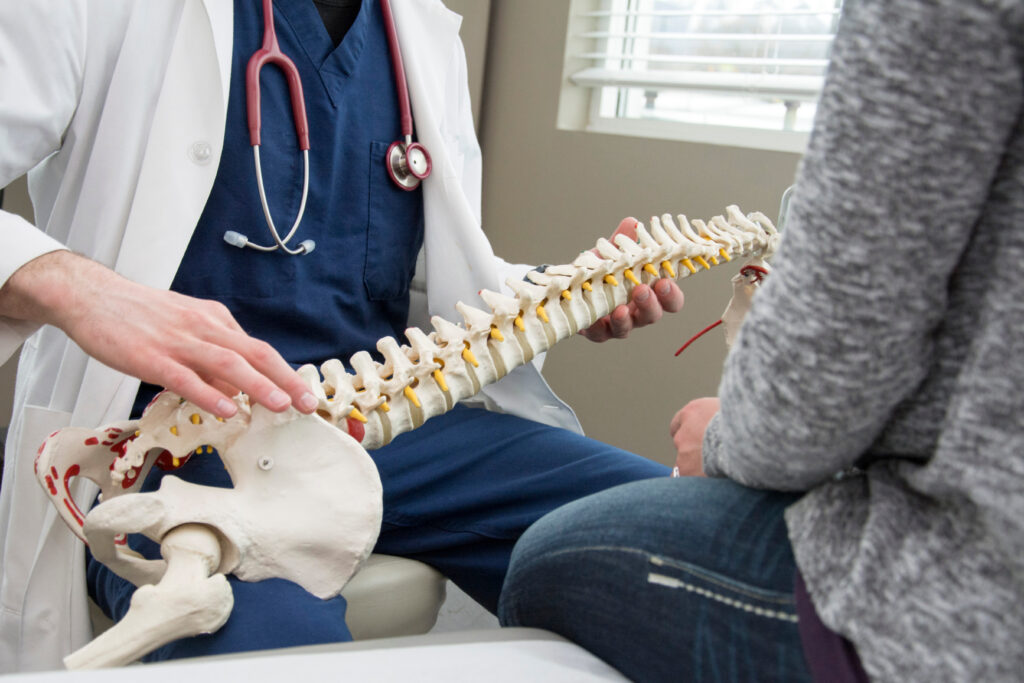Understanding the Common Spine Problems That May Require Surgical Intervention
Conditions such as herniated discs, spine stenosis, and degenerative disc condition not only affect mobility however can also dramatically impair top quality of life. As we explore the numerous conditions and their effects, it becomes noticeable that the decision-making process bordering surgical treatment is complex and complicated, elevating crucial inquiries regarding timing, risks, and results.
Herniated Discs
Herniated discs are a widespread spinal problem, often resulting from age-related deterioration or acute injury. best spine surgeons in st louis mo. This condition takes place when the soft internal product of a back disc protrudes with its external layer, possibly compressing adjacent nerves. The resulting signs can consist of localized pain, feeling numb, tingling, or weakness in the limbs, depending upon the damaged location of the spine
Diagnosis normally entails a comprehensive case history and health examination, typically supplemented by imaging researches such as MRI or CT scans. These diagnostic devices permit health care experts to analyze the extent of the herniation and its effect on bordering frameworks.
Therapy alternatives for herniated discs vary from traditional measures, such as physical therapy and medicine, to even more intrusive procedures. Lots of individuals find relief through non-surgical methods, which concentrate on pain management and restoring function. However, when conservative therapies fall short to alleviate symptoms or when neurological deficiencies emerge, medical treatment may be required.
Surgical choices, including discectomy or spinal blend, goal to eliminate pressure on the affected nerves and recover spine security. The decision to seek surgical procedure is typically made after mindful consideration of the patient's total health and wellness, seriousness of symptoms, and reaction to previous treatments.
Spinal Stenosis

Signs and symptoms typically worsen with tasks that require extended standing or walking, leading to a problem called neurogenic claudication. Medical diagnosis generally includes imaging studies, such as MRI or CT scans, which aid imagine the level of stenosis and determine affected locations.
Therapy alternatives for back constriction might begin cautiously, making use of physical treatment, pain administration methods, and way of life adjustments. Surgical interventions, such as decompression laminectomy or spine combination, objective to ease pressure on the spinal cord and nerves, consequently relieving discomfort and recovering feature.
Scoliosis
A significant number of people are impacted by scoliosis, a condition identified by an unusual lateral curvature of the spinal column (best spine surgeons in st louis mo). This curvature can create in different types, consisting of idiopathic scoliosis, which emerges without a well-known cause, or as an outcome of neuromuscular problems, congenital factors, or degenerative conditions. The seriousness of scoliosis can differ dramatically, varying from mild contours that may not call for treatment to extreme situations that can result in discomfort, breathing concerns, and reduced lifestyle
Medical diagnosis is commonly made with health examinations and imaging researches such as X-rays, which help analyze the degree of curvature and its development. Treatment alternatives are identified based upon the seriousness of the curvature, age of the patient, and possibility for progression. Non-surgical treatments include monitoring, bracing, and physical treatment. Nevertheless, surgical treatment may end up being essential for clients with substantial curvature that is aggravating, or for those experiencing debilitating signs. Surgical alternatives often include spine blend, which aims to fix the curvature and support the back. Early medical diagnosis and intervention are important to taking care of scoliosis effectively and reducing prospective difficulties.

Degenerative Disc Condition

DDD is commonly a result of the natural aging process, but factors such as genes, lifestyle, and recurring strain can increase its beginning. Patients regularly report local pain in the lower back or neck, which may radiate to various other areas, such as the limbs. In serious situations, nerve compression can result in neurological symptoms, consisting of tingling, tingling, or weakness.
While traditional therapies, such as physical therapy and pain monitoring, can minimize symptoms for many individuals, some might need surgical intervention. Surgical alternatives, such as spine fusion or man-made disc replacement, purpose to bring back security and reduce discomfort by attending to the underlying problems created by DDD. An extensive assessment by a spine expert is necessary to establish one of the most suitable therapy strategy.
Fractured Vertebrae
Fractured vertebrae represent a substantial worry in spinal column health, frequently arising from injury, osteoporosis, or other degenerative conditions (best spine surgeons in st louis mo). These cracks can cause severe discomfort, loss of mobility, and possible complications such as spinal instability or neurological deficits. The mechanism of injury normally involves either straight trauma, such as falls or vehicular crashes, or the steady weakening of bones due to problems like osteoporosis
Diagnosis is generally validated via imaging researches, consisting of X-rays, CT scans, or MRIs, which expose the degree and click this site kind of fracture. Treatment options vary depending on the crack's extent and the patient's general wellness. Traditional administration might involve pain relief, remainder, and physical therapy; however, surgical treatment might be essential for displaced cracks, those creating spinal instability, or when traditional procedures stop working.
Surgical methods can include vertebroplasty or kyphoplasty, procedures focused on relieving and supporting the vertebra pain. In extra severe situations, Related Site spinal combination might be indicated to bring back architectural stability. Timely and ideal intervention is essential in making certain optimum recovery and lessening long-lasting issues connected with fractured vertebrae.

Final Thought
In summary, common spine problems such as herniated discs, back constriction, scoliosis, degenerative disc illness, and fractured vertebrae can substantially hinder top quality of life and necessitate medical intervention. While conservative treatments may give alleviation in most cases, severe or persistent symptoms frequently call for surgical choices to bring back feature and minimize discomfort. Prompt diagnosis and proper management are essential to improve patient results and facilitate recuperation in people impacted by these devastating conditions.
Spinal constriction is a condition identified by the constricting of the spine canal, which can lead to compression of the spine cord and nerve origins. Surgical treatments, such as decompression laminectomy or spinal fusion, goal to alleviate stress on the spine cord and nerves, thus minimizing discomfort and recovering feature. Surgical choices, such as spine fusion or man-made disc replacement, aim to recover stability and alleviate pain by resolving the underlying concerns created by DDD. Traditional monitoring may entail discomfort relief, rest, and physical therapy; nonetheless, medical treatment might be needed for displaced cracks, those creating spine instability, or when traditional steps fall short.
In recap, common spine problems such as herniated discs, spinal stenosis, scoliosis, degenerative disc condition, and broken vertebrae can considerably harm browse around here high quality of life and demand medical intervention.